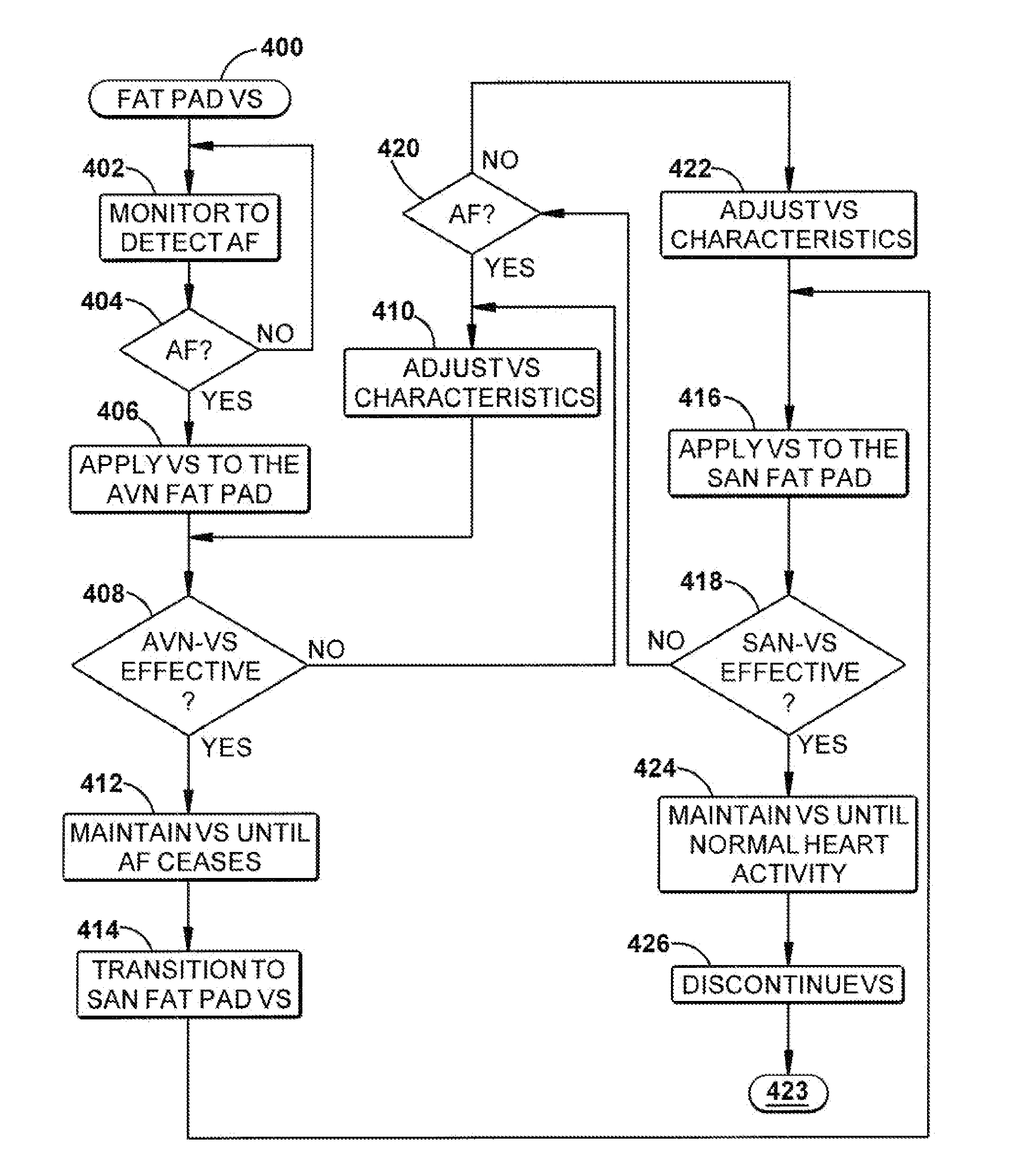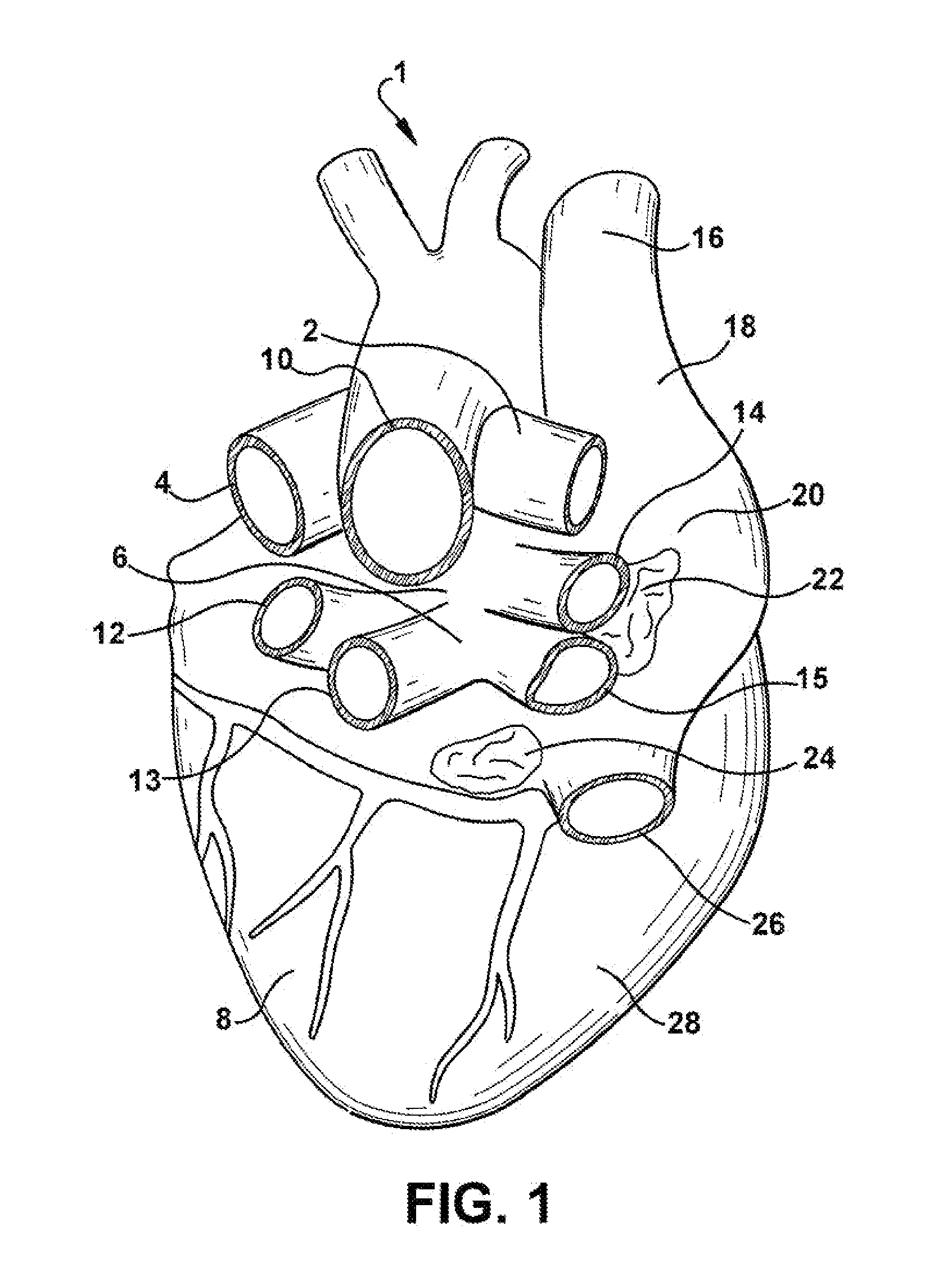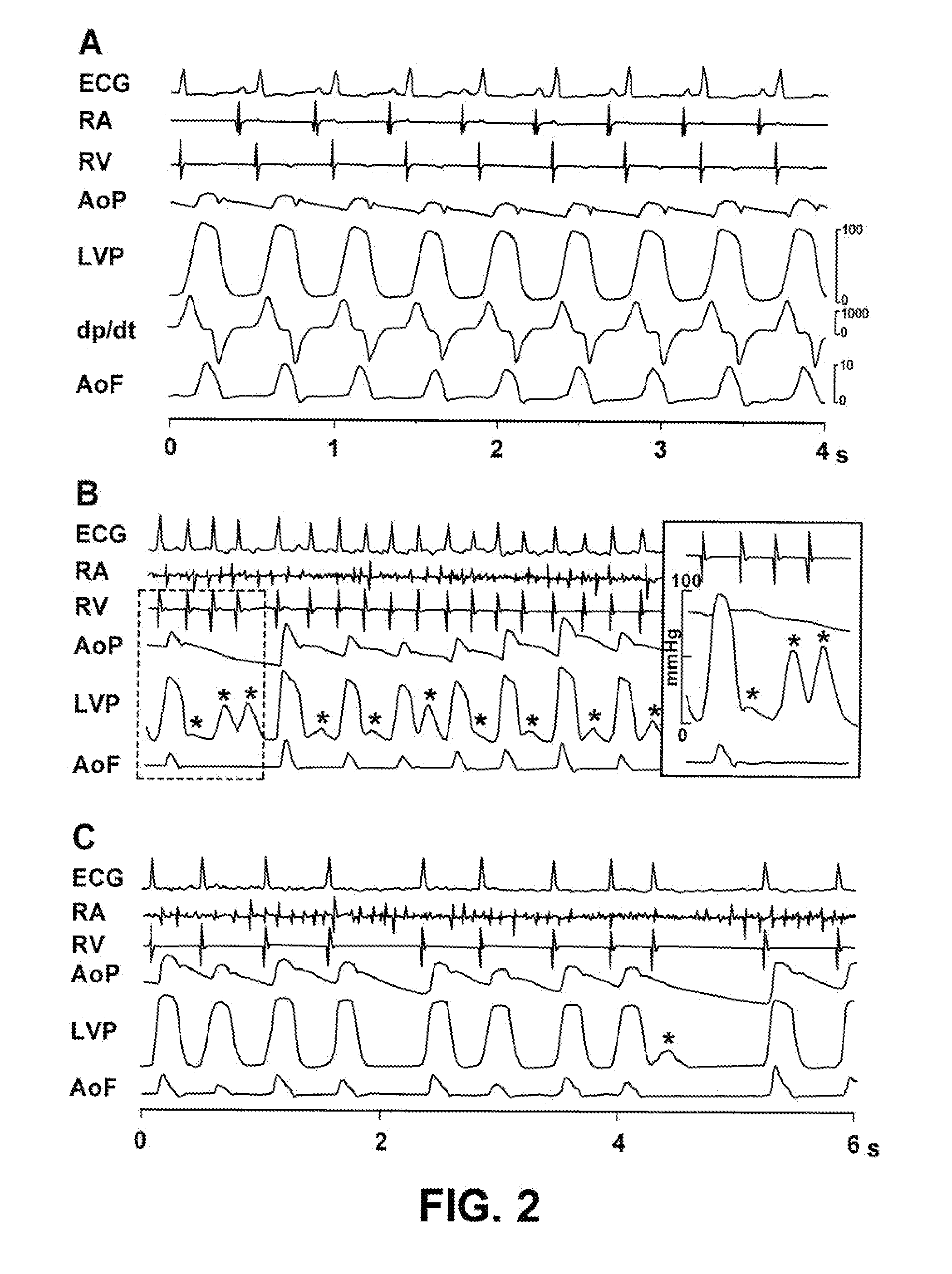Control of cardiac arrhythmia by vagal stimulation at the atrioventricular and sinoatrial nodal fat pads of the heart
a vagal stimulation and heart heart technology, applied in the field of control of cardiac arrhythmias, can solve the problems of symptomatic tachycardia or low cardiac output, a 5-10% risk of thromboembolic complications and events, and the recurrence rate after such therapy can be as high as 75%, and achieve the effect of vagal stimulation level
- Summary
- Abstract
- Description
- Claims
- Application Information
AI Technical Summary
Benefits of technology
Problems solved by technology
Method used
Image
Examples
example procedures
for Controlling Heart Rate with Fat Pad Vagal Stimulation
[0072]Epicardial leads may be introduced to the atrioventricular nodal (“AVN”) fat pad of the heart and sinoatrial nodal (“SAN”) fat pad of the heart via any suitable method or technique. Examples of suitable methods or techniques for introducing epicardial leads include introducing them percutaneously using minimally invasive techniques, and introducing them directly during open heart surgery. The epicardial leads may be temporary or permanent, and may be secured using known means, such as suturing, twisting, or via a self-anchoring structure. The electrodes at the end of the leads may be of any suitable configuration or geometry, such as plate, helical, or curved, and may be of any desired polar configuration, such as unipolar, bipolar, or quadripolar. For temporary arrhythmia control, the leads may include biodegradable electrodes and other components.
[0073]Proper lead placement may be confirmed by applying stimulation and ...
PUM
 Login to View More
Login to View More Abstract
Description
Claims
Application Information
 Login to View More
Login to View More - R&D
- Intellectual Property
- Life Sciences
- Materials
- Tech Scout
- Unparalleled Data Quality
- Higher Quality Content
- 60% Fewer Hallucinations
Browse by: Latest US Patents, China's latest patents, Technical Efficacy Thesaurus, Application Domain, Technology Topic, Popular Technical Reports.
© 2025 PatSnap. All rights reserved.Legal|Privacy policy|Modern Slavery Act Transparency Statement|Sitemap|About US| Contact US: help@patsnap.com



